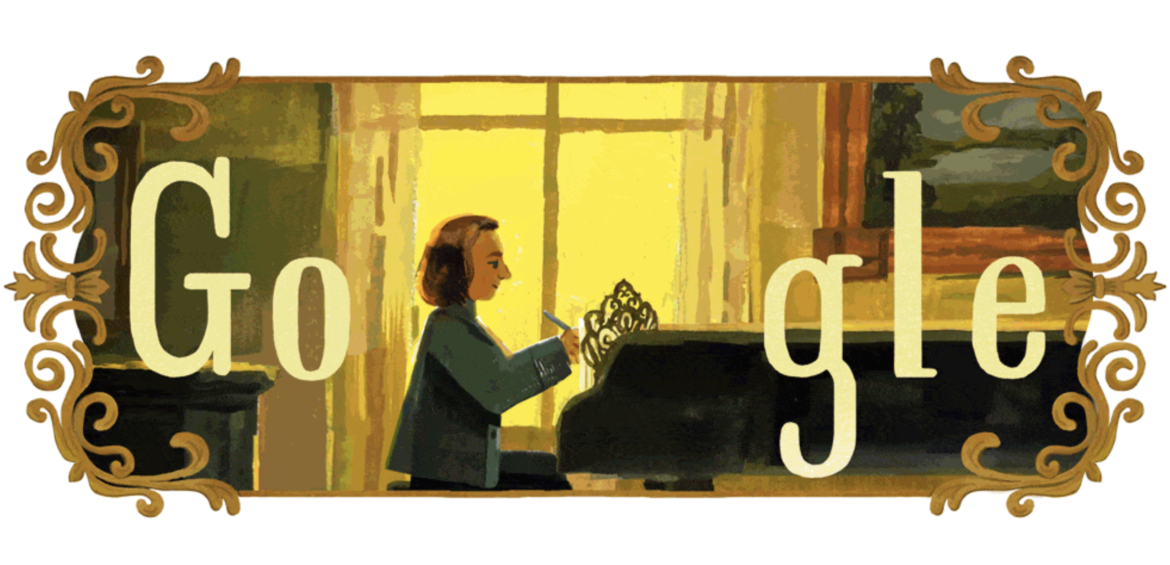適逢 Google 布拉姆斯190歲生日紀念!
在古典音樂的豐富歷史中,布拉姆斯的身影矗立不搖。他以其深邃的創新和技巧滿足了對浪漫音樂的渴望,同時又堅守古典的形式美學。此篇文章將深入探討布拉姆斯的音樂生涯,以及他的三首鋼琴奏鳴曲和狂想曲,這些作品揭示了他獨特的音樂語言和創作技巧。透過深入分析這些作品,我們將能夠更好地理解這位偉大作曲家!
布拉姆斯的生平
約翰內斯·布拉姆斯(Johannes Brahms)是一位德國作曲家及鋼琴家,生於1833年5月7日,卒於1897年4月3日。他是19世紀浪漫主義音樂時期的三大代表性人物之一,與貝多芬、巴赫齊名,常被譽為“三大B”之一。
布拉姆斯出生於一個貧窮的音樂家家庭,他的父親是一位音樂家,從小就對音樂有著深深的熱愛。從他的早年創作可以看出,布拉姆斯的音樂天份得到了充分的發揮和磨練。他在16歲時創作了首部鋼琴作品,並在當地音樂界引起了關注。
1853年,布拉姆斯的人生有了一個重大轉折。他有幸與當時的音樂巨人李斯特、舒曼和尼古拉·約瑟夫·達維德交朋友。舒曼特別欣賞他的才華,並在新音樂雜誌上高度讚揚他,使他一夜之間成為音樂界的焦點。
布拉姆斯的音樂作品涵蓋了許多形式,包括交響樂、室內樂、鋼琴曲、合唱曲以及歌曲等。他的風格既保留了古典音樂的嚴謹結構,又融入了浪漫主義的表現手法,並深受匈牙利民間音樂的影響。他的作品雖受到了部分音樂評論家的批評,但同時也贏得了眾多聽眾和樂評人的讚譽。
1897年4月3日,布拉姆斯在維也納因肝癌去世,享年63歲。他的音樂作品對後世音樂家的影響深遠,至今仍被世界各地的音樂會所演奏。
關於新音樂雜誌
《新音樂雜誌》(Neue Zeitschrift für Musik)是一本由羅伯特·舒曼於1834年在萊比錫創立的音樂雜誌。舒曼創辦這本雜誌的主要目的是為了推廣新的音樂理念和新的音樂才華,反對當時的音樂主流思想和趨勢。
在舒曼的領導下,《新音樂雜誌》成為了推動19世紀浪漫主義音樂的重要力量。他透過這個平台,向公眾推薦了許多當時尚未被廣泛認知的作曲家,其中就包括布拉姆斯。
對布拉姆斯的描述
1853年,舒曼在《新音樂雜誌》上寫道:“如果有人問我如何看待新時代的前景,我將回答,希望我們的期望將集中在布拉姆斯的身上;如果他繼續進步,我預見他將達到最高的成就。一位像他這樣的天才出現,總是一種奇蹟。”
舒曼也在新音樂雜誌的文章 “Neue Bahnen” (New Pathways) 中,直接將20歲的布拉姆斯比作宙斯的頭部生出的智慧女神雅典娜,他確實對布拉姆斯的才華給予了很高的讚譽。
舒曼死後
然而,1854年,由於舒曼的精神狀態出現了嚴重問題,他被迫結束了對雜誌的編輯工作。後來,舒曼的妻子克拉拉·舒曼在他去世後出售了《新音樂報》。雖然克拉拉是一位有才華的音樂家和音樂教育家,但她並非一位出色的編輯或出版商。因此,出售《新音樂報》可能是她面對困難經濟狀況的現實選擇。
還不知道新德國樂派與布拉姆斯的戰爭嗎?歡迎閱讀:新德國樂派與布拉姆斯:傳統與創新的音樂論述 | NEW GERMAN SCHOOL
《新音樂雜誌》在舒曼去世後被賣給了阿爾貝特·貝蘭德(Albert Brendel)。貝蘭德是一位音樂評論家,也是新德國樂派的重要推動者。在貝蘭德的管理下,《新音樂雜誌》確實開始更多地支持新德國樂派的理念和作曲家,這與舒曼時期的編輯政策存在著明顯的差異。儘管《新音樂雜誌》的立場發生了變化,但它仍然保持了作為推廣新音樂理念和才華的重要平台的地位。
作品介紹
Brahms – Piano Sonata No. 1, Op. 1
布拉姆斯的鋼琴奏鳴曲第一號(Piano Sonata No. 1),作品編號Op.1,是他的第一個正式出版的作品,並成為他早期創作生涯的重要標誌。
本首曲子是C大調,但實際上它的絕大部分(除了慢樂章)是在Op. 2的F小調奏鳴曲和Op. 4的E小調輕快樂章之後創作的。Op. 1在布拉姆斯的早期生涯中具有重要地位,因為他用它來介紹自己給約阿希姆、李斯特和舒曼夫婦。1853年,當時布拉姆斯只有20歲,布拉姆斯選擇了這部作品作為他在著名出版商布萊特科普夫和哈特爾的首部出版作品。
這首曲子具有宏偉的四樂章結構,與貝多芬的早期奏鳴曲(Op. 2系列和Op. 7)相似。布拉姆斯的Op. 1和李斯特的B小調奏鳴曲的概念差異,在兩位作曲家的見面之際被極大地凸顯出來,因為在那次會面中,布拉姆斯演奏了他的Op. 1,而李斯特則回敬了他的B小調奏鳴曲。有趣的是,有報告稱布拉姆斯在李斯特的演奏過程中睡著了,雖然這可能只是一種誇大的描繪。
就像孟德爾頌的Op. 106奏鳴曲一樣,布拉姆斯的Op. 1奏鳴曲的開頭動機與貝多芬的Op. 106(被稱為”槌子鍵琴大奏鳴曲”)有著明顯的相似性。有證據表明,布拉姆斯對這種相似性有所意識,因為他在創作Op. 1的時候,剛好聽到他的密友、鋼琴家弗朗茨·烏爾納(Franz Wullner,1832-1902)在漢堡演奏”槌子鍵琴大奏鳴曲”。
這表明布拉姆斯在創作這部Op. 1奏鳴曲時,很可能受到了貝多芬的深遠影響。他的音樂既繼承了古典主義的嚴謹和平衡,又加入了浪漫主義的熱情和創新。這部作品既展示了他作為作曲家的才華,也反映了他對音樂傳統的深厚認識和敬意。
該作品共分為四個樂章:
- 第一樂章: Allegro – C小調。該樂章以典型的奏鳴曲形式結構,具有一種激進和熱情的情感風格。
- 第二樂章:Andante – E大調。這是一個富有詩意的樂章,旋律優美,氣氛寧靜。
- 第三樂章:Scherzo – Allegro molto e con fuoco – C小調。這是一個輕快的樂章,充滿了活力和節奏感。
- 第四樂章:Finale – Allegro con fuoco – C小調。這個樂章是整個奏鳴曲的高潮,以其雄壯的氣勢和熱情的情感風格作為結束。
Brahms – Piano Sonata No. 2, Op. 2
布拉姆斯的第二號鋼琴奏鳴曲(Op. 2)是在1852年完成的,比他的第一號鋼琴奏鳴曲(Op. 1)早。然而,布拉姆斯選擇把Op. 2作為他的第二個出版作品,這可能是因為他覺得這部作品在創作上更為成熟。這部奏鳴曲被獻給了克拉拉·舒曼,舒曼夫人是布拉姆斯的朋友和導師羅伯特·舒曼的妻子,也是一位優秀的鋼琴家。
布拉姆斯的第二號鋼琴奏鳴曲是一部標準的四樂章作品:
- 第一樂章是充滿激情的奏鳴曲形式,由兩個主要的主題構成,展示了布拉姆斯的音樂語言和對和諧結構的掌握。
- 第二樂章是一個悠美的抒情部分,展示了布拉姆斯對歌曲形式的深深理解和他的抒情創作才能。
- 第三樂章是一個活潑的輕快舞曲,加上中間的三重奏部分,為這部作品增加了不同的色彩和氛圍。
- 第四樂章以華麗的奏鳴曲形式結束,展現出布拉姆斯對於大型形式的精確掌握和他強烈的劇性本能。
布拉姆斯的Op. 2是他三首鋼琴奏鳴曲中最短的一首,也是最不連貫的一首。它開頭的材料聽起來像應該作為引子的音樂,但在構造上卻被當作第一主題來使用。這部作品試圖通過強烈的八度和類華彩樂段的長時間居主九度和聲來留下初期的印象。這種充滿即興感的寫作方式在最後的樂章中再次出現,開頭和結尾都有,它們將整個奏鳴曲快板結構包裹在其中。第二樂章也使用了類華彩樂段的手勢來引入對民謠主題的第三個和最後一個變奏,並且作為通往輕快舞曲的橋樑。
布拉姆斯加入了一些具有即興性質的長段,通過在整個作品中構造出一些相關的主題材料,進行了某種程度的統一。有些評論者甚至認為這部作品是基於一個單一的主題想法構建的,並且在作品的四個樂章中,這個主題以各種不同的形式出現,這可以看作是布拉姆斯對主題變形的應用,這是當時李斯特等人音樂中非常普遍的一種手法。然而,儘管Op. 2有許多精彩的瞬間,但在許多人看來,這部作品仍然是布拉姆斯的三首鋼琴奏鳴曲中最難以理解,也是演出最少的一首。
Brahms – Piano Sonata No. 3, Op. 5
布拉姆斯的鋼琴奏鳴曲第三號,Op. 5,約他在20歲時完成的(三首奏鳴曲都在這個時期完成)。這部作品是他為鋼琴創作的最後一部奏鳴曲,也被視為他最為深沉和成熟的創作。這部五樂章的作品為布拉姆斯早期作品的結束劃上了句號,同時展示了他豐富的音樂才華和前瞻性的音樂視野。
以下是對Op. 5的進一步介紹:
- 第一樂章(Allegro maestoso):這個樂章以C小調開始,旋律強烈而宏偉,展示了布拉姆斯對音樂形式的精練掌握和對和諧的深入理解。主題在鋼琴上的轉化和發展,展示了布拉姆斯音樂語言的獨特性。抒情的第二主題在主題展示中以降A音出現,在開發部分中被提升到降D音,並延伸成左手在大提琴音域演奏的豐富旋律。
- 第二樂章(Andante espressivo):第二樂章的開頭呈現的是夜晚、月光和戀人團聚的景象。這種情緒安靜地反映在整個樂章中,直到尾聲,一個長篇的部分,布拉姆斯出乎意料地借用了來自第一樂章發展部分的大提琴般的旋律,並構建了一個極具情感張力的高潮。這是一個有著抒情性質的樂章,主題旋律深情且感人。布拉姆斯在這裡展現了他對內心情感的細膩描繪,使得樂章的情感深度與節奏緩慢的速度形成鮮明對比。
- 第三樂章(Scherzo: Allegro energico):這個樂章帶有強烈的節奏感,鮮明的對比和有力的節奏強調了這部作品的活力與能量。結構規整,就像其他奏鳴曲中的快板一樣,由於其驅動力強大,由八度音和大和弦組成的質地在外部部分以及更持續、抒情的三重奏中都表現出來。
- 第四樂章(Intermezzo: Andante molto):在最後一個樂章之前,增加了一個短小、即興的Intermezzo(間奏曲),題為”Rückblick”(回顧),使得樂章的總數增至五個,這在奏鳴曲中是相當罕見的。間奏曲以第二樂章的開頭主題為基礎,進一步增加了作品的循環感。這個樂章更加溫柔,提供了對前三個樂章的安靜反思。它具有夢幻般的質地和旋律的豐富性,為作品帶來了深度和複雜性。
- 第五樂章(Finale: Allegro moderato ma rubato):最後一個樂章以充滿激情的旋律和強烈的節奏回到了C小調,但最後卻轉向C大調,象徵著希望和勝利。最後一個樂章似乎給布拉姆斯帶來了很大的困擾,因為它讓他延遲了兩個月(直到1853年底)才將作品寫完,並寫信給首次出版該作品的出版商B. Senff,說這部作品已經準備好出版了。這個樂章在結構上仍然是最神秘的,開始像一個預料之中的迴旋曲,但在第二部分的主題出現後,布拉姆斯對它十分著迷,不僅持續使用它,還在開頭主題回歸時一直使用它,直到樂章結束。在最後一個樂章的後期出現一個重要的主題,這在布拉姆斯的第一號交響曲Op. 68中也是。
布拉姆斯的作品中,最受人喜愛的無疑是Op. 5奏鳴曲。儘管這部作品與其他兩首鍵盤奏鳴曲的創作時間相距僅數月,但它普遍被認為是結構更為精心打造,具有浪漫風格中的大膽、戲劇性效果,而不像前兩首奏鳴曲那般讓鋼琴家感到尷尬。和它的兩個姐妹作品一樣,它以一個燦爛的開頭開始,開頭的主題成為整個樂章的核心。有趣的是,布拉姆斯在Op. 1和Op. 5這兩部稍後的奏鳴曲中都保留了對主題的重複,而只在最早的作品Op. 2中放棄了這種手法。
Brahms – Rhapsody Op. 79 No. 1
布拉姆斯的兩首狂想曲,Op. 79,於1879年完成並出版,這兩首狂想曲都是獻給他的朋友,鋼琴家兼音樂學者伊莉莎白·沃特斯曼。每一首狂想曲都具有強烈的情感張力和極具挑戰性的鋼琴技巧,它們深受鋼琴家和觀眾的喜愛。
第一首狂想曲(Op. 79, No. 1)以B小調為主調,並標記為“精神狂暴地,但不過快”。布拉姆斯在這裡使用了他擅長的樂曲形式,即三部曲形式,並通過音樂的各個方面來傳達深沉且充滿力量的情感。
這首作品的開頭具有迷人的主題,由鋼琴的低音部分彈奏,並伴隨著強烈的節奏型態。在中間部分,音樂變得更加內向,這部分主要由富有歌唱性的旋律主導,並以較大的動態範疇漸變進入高潮。最後,音樂回到開頭的主題,以激烈而激昂的音樂來完成整個作品。
兩首Op. 79狂想曲都以有力,重音質感的聲音開始;都提供了柔和,惆悵的動機作為對比的第二主題材料;並且都包含了高潮的閃光點。這兩首作品無疑是布拉姆斯最受歡迎的鍵盤樂曲之一。
Liszt – Hungarian Rhapsody No. 2
布拉姆斯的狂想曲與李斯特的“匈牙利狂想曲第二號”,雖然兩者都被稱為”狂想曲”,但在風格、結構和表現手法上有顯著的差異,這主要是因為兩位作曲家的創作風格和對音樂結構的理解不同。
李斯特的“匈牙利狂想曲第二號”是他最知名的作品之一,是他匈牙利狂想曲系列中的代表作。該曲主要由兩個部分構成,先是較慢的序奏,然後是一個快速的華麗樂段。李斯特的這部作品以華麗、展示性的鋼琴技巧聞名,包括快速的鍵盤技巧和富有戲劇性的樂段。
另一方面,布拉姆斯的狂想曲作品風格與李斯特的差異較大。布拉姆斯的狂想曲作品通常以深沉的情感和精緻的結構為特點。布拉姆斯的作品通常比李斯特的作品更為內省和審慎。
兩位作曲家的創作背景和風格都影響了他們的狂想曲作品。李斯特是19世紀的鋼琴巨擘和創新者,他的作品往往展現出華麗的技巧和戲劇性的風格。布拉姆斯則是浪漫主義時期晚期的代表作曲家,他的作品往往深思熟慮,形式結構完整,情感深邃。
結語
布拉姆斯的生涯及其作品展示了他無與倫比的音樂才華。他的奏鳴曲和狂想曲不僅展示了他作為作曲家的技巧和創新,也展示了他對音樂形式的深入理解和尊重。布拉姆斯的音樂提醒我們,真正的藝術創作既需要深厚的技巧,也需要熱情與創新的精神。想要更深入了解布拉姆斯的音樂世界,並探索他的變奏曲、間奏曲和性格小品的魅力嗎?請前往我們的下一篇文章!布拉姆斯的音樂進階 – 變奏曲與鋼琴小品的藝術深度 | JOHANNES BRAHMS

